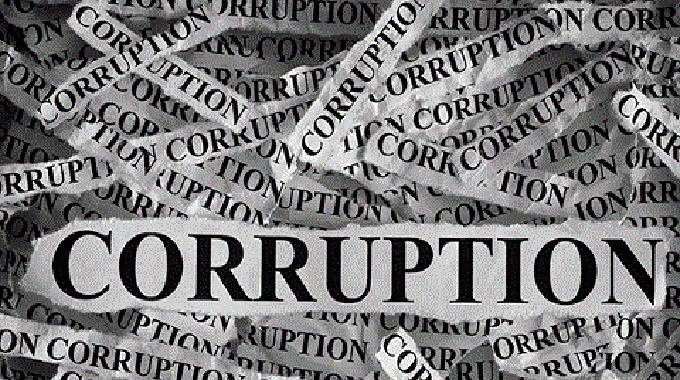EDITORIAL COMMENT: Maintain drains or deal with floods

STORM water drainage is rarely taken seriously until storm water stops being drained, and then everyone complains, some because of the inconvenience and some with more reason because of the damage and danger.
And this rainy season it will be no different, perhaps just worse with so little done to prepare urban areas for major storms.
The littering is hardly easing up and delays in refuse collection make this worse. More drains are damaged, destroyed or simply clogged; increasing densities and wetland destruction ensures that just about all the rain that falls becomes immediate runoff as the natural buffers are removed.
To take the largest city, Harare, the problems can be predicted right now. In the city centre, the Avenues, the older industrial areas and the inner ring of suburbs, the storm water drains are underground, with the storm water entering via catchpits, those openings in the kerbing near intersections and often in the middle of blocks.
Harare City Council says it is aware of the looming problem and will be cleaning out these catchpits. So we will see the lids removed and vast mounds of stinking garbage, largely the mouldering remains of packaging for takeaways, empty snack packets, and embedded into this a lot of empty and filthy plastic bottles.
And even while the truck is going around collecting these mounds, pedestrians will be busy throwing more into the empty catchpits, and they and drivers will be dumping more into the street gutters and onto pavements where the next storm will wash them away, straight into the catchpits.
And when the catchpits are full the storm water will just form large lakes on the roads before it leaks away very slowly through the clogged catchpits and drains.
Depending on the slant of the street, the willingness of shops and property owners to put in adequate street bins and the willingness of the city council to empty any street bins frequently so they never overflow, will depend on just how deep those lakes become.
We also need to take into account parked cars whose drivers think a good clean-out means shifting car rubbish to the street.
Among the worst areas are near bus terminuses, where bins are basically non-existent and pedestrian traffic munching snacks is high. The catchpits fill within a day of being emptied and large lakes form.
On the south side of the Simon Muzenda Street terminus, for example, the water in Robert Mugabe Road can become well over 10cm deep, covering ankles fully.
When that underground drainage system was put in place the city was different. For a start there were far fewer people eating on the street, and packaging for pies and the like was either non-existent or just a thin small paper bag.
Drinks came in glass bottles with refundable deposits, so even if the lazy just propped them up in a drain, someone would within minutes grab it to claim the refund.
In fact in those far off days, leaves would probably have been the biggest source of waste going down the drains, since at that time Harare was known as the city of flowering trees; what we see in the upper Avenues stretching down to the railway line. And leaves are small and they rot, so the drains coped.
Pavements were also in good repair, which meant that the entrances to the catchpits were actually open, and the gutters taking water from the block to the catchpit were actually functional.
Beyond the inner ring of suburbs drainage is open drains on the side of the road, usually with large culverts at intersections although a dip in the road sometimes sees surface water crossing a road.
These, in one sense, are easier to keep clear than the underground drains since everyone can see when they are clogged and so do something about it.
The problem comes when businesses and householders dislike seeing an open drain outside their plot and simply fill it in, as part of the landscaping.
The culvert pipes that are supposed, by law, to be laid under every driveway are either buried in silt, filled with silt or simply not there.
It is not unusual to see someone spending a lot of money on paving an entrance and driveway and simply missing out the culvert.
In the old days the city council, and the town management boards that ran most suburbs, sent teams down every road in the months before November to clear out these drains and culverts.
Property owners were expected to keep the drainage in good repair and if the councils had to intervene, the property owner was charged.
Even now you will see places on the side of the road where stands are lower than the roadbed where property owners are frantically having drains redug, and if necessary if the slope of the road is too gradual, bringing in their neighbours to extend the drained section.
These are obviously people who last season had a river down their driveway and their garden and perhaps their floors under water. Self interest can work.
But others simply do not care, or to be more precise do not care enough to clean out the drains.
You can even see people raising a hump at their gate to stop a river flowing down their drive, rather than fixing the drain so the river does not form in the first place.
Rising densities make the problem worse. The city centre is already an almost continuous expanse of concrete, roofing and tar.
Rain falls and the immediately flows into drains. As you move into the suburbs this is starting to happen more and more.
It is not unusual even in a middle density suburb to find well over half the surface area of a stand is roof and paving.
We saw this a few years ago around Borrowdale Brooke where storm water drains that were perfectly adequate when plots were 2ha in size were totally overwhelmed by the far denser cluster housing sending far more water immediately into drains.
So this is seen across all social strata, almost all rain converted into immediate runoff, and made worse when the wetlands no longer buffer the surges.
The problem needs more than just some bits of emergency work. It needs to have the anti-litter programme intensified, so drains clog less often.
It needs people to understand that decent drainage needs to be in place for what might just be a score of storms over a few months.
It needs the council to collect the garbage on time so there is less flowing into drains, and for the council to enforce its own by-laws to make property owners maintain the drainage outside their property.
This is all simple, but if we dislike wading or driving through lakes, if we worry about our living room floor disappearing under the waves, if we just want a decent city, we all need to be involved.
Drainage is just cheap and efficient engineering, and once the design is done by a professional it will last centuries if those living with it maintain it.










Comments